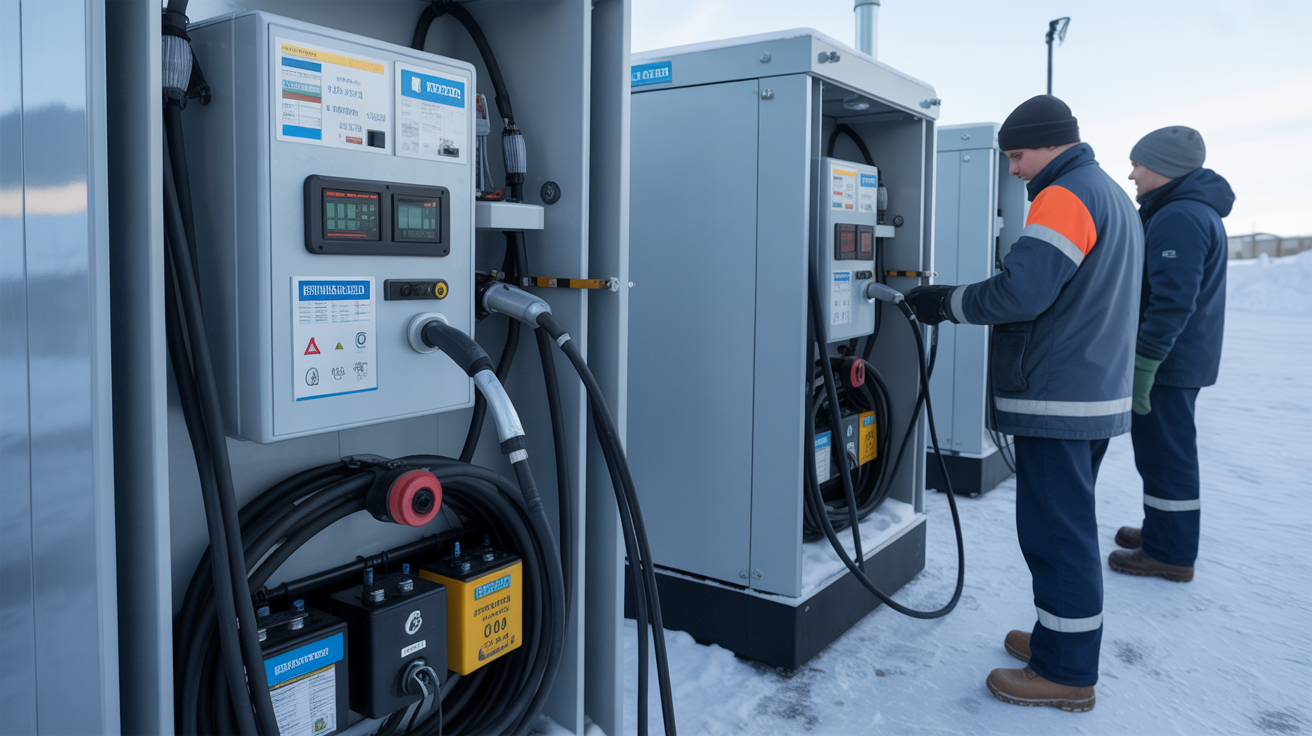Charging Wide-Temp Batteries in Cold Temperatures
Best practices and proven techniques for safely charging wide temp batteries in sub-zero conditions, ensuring optimal performance and longevity.

Critical Safety Note
Never attempt to charge standard lithium batteries below 32°F (0°C). This article specifically addresses wide temp batteries designed for cold weather charging. Always consult your battery manufacturer's specifications before cold weather charging.
Understanding Cold Weather Charging Fundamentals
Charging batteries in cold temperatures requires a completely different approach than standard room temperature charging. The fundamental challenge is that lithium ions move more slowly through the electrolyte at low temperatures, creating the potential for dangerous lithium plating if charging is not properly managed.
Temperature Thresholds for Safe Charging
Intelligent Power Battery Charging Guidelines
Normal charging protocols. Full charge rate available.
Reduced charge rate. Temperature monitoring required.
Pre-warming required before charging. Specialized algorithms only.
Best Practices for Cold Weather Charging
1. Temperature Monitoring and Management
Successful cold weather charging begins with accurate temperature monitoring:
- Multiple sensor placement - Monitor cell temperature, not ambient temperature
- Real-time data logging - Track temperature trends during charging cycles
- Thermal management activation - Use integrated heating when available
- Gradient monitoring - Watch for temperature differences across the battery pack
2. Adaptive Charging Algorithms
Intelligent Power's wide temp batteries incorporate sophisticated charging algorithms that automatically adjust based on conditions:
Temperature-Based Adjustments
- • Charge current reduction below 32°F
- • Voltage compensation for temperature
- • Extended charge time calculations
- • Automatic charge termination triggers
Safety Mechanisms
- • Lithium plating prevention
- • Over-current protection
- • Thermal runaway monitoring
- • Automatic charge suspension
3. Pre-Warming Strategies
For wide temp cold conditions below 0°F (-18°C), pre-warming the battery is essential:
- Internal heating elements - Purpose-built batteries include integrated warming
- External heating pads - Temporary warming for standard installations
- Insulation and enclosures - Maintain ambient temperature around batteries
- Trickle current warming - Very low current to generate internal heat
Charging Protocols by Temperature Range
Moderate Cold: 20°F to 32°F (-7°C to 0°C)
Recommended Protocol:
- • Reduce charge current to 50% of normal rate
- • Monitor cell voltage rise carefully
- • Extend charge time by 30-50%
- • Use constant current/constant voltage with lower current threshold
Severe Cold: 0°F to 20°F (-18°C to -7°C)
Recommended Protocol:
- • Reduce charge current to 25% of normal rate
- • Implement staged charging with rest periods
- • Monitor for voltage instability
- • Consider pulse charging techniques
Wide Temp Cold: Below 0°F (-18°C)
Recommended Protocol:
- • Pre-warm battery to minimum 10°F (-12°C)
- • Use specialized wide temp chargers
- • Implement trickle charging only
- • Continuous temperature and voltage monitoring
Field Deployment Best Practices
Equipment Selection
Choosing the right charging equipment is crucial for cold weather success:
- Temperature-compensated chargers - Automatically adjust for ambient conditions
- Multiple charging profiles - Pre-programmed settings for different temperature ranges
- Remote monitoring capability - Track charging status from warm locations
- Weatherproof enclosures - Protect charging equipment from the elements
Operational Procedures
Field Charging Checklist
- 1. Measure battery temperature - Use calibrated thermometer
- 2. Check ambient conditions - Wind, humidity, precipitation
- 3. Select appropriate charging profile - Based on temperature measurements
- 4. Monitor initial charging response - Watch for normal voltage rise
- 5. Document charging parameters - For troubleshooting and optimization
Common Cold Weather Charging Mistakes
What NOT to Do
- • Never force charge at full current in cold
- • Don't ignore temperature warnings
- • Avoid rapid charging below 32°F
- • Don't assume all batteries are cold-capable
Best Practices
- • Always measure battery temperature
- • Use temperature-compensated charging
- • Plan for longer charging times
- • Invest in proper cold weather equipment
Conclusion
Successful cold weather charging requires understanding the physics behind battery chemistry, using appropriate equipment, and following proven protocols. Intelligent Power's wide temp batteries are specifically designed to handle these challenging conditions, but proper charging techniques are still essential for optimal performance and longevity.
"The difference between successful cold weather operations and equipment failure often comes down to proper charging protocols. There are no shortcuts when it comes to charging batteries in wide temp conditions."
Expert in wide temp battery technology with extensive field experience in cold weather charging systems. Darrell has developed charging protocols used in Arctic operations, Antarctic research stations, and oil field installations across North America.